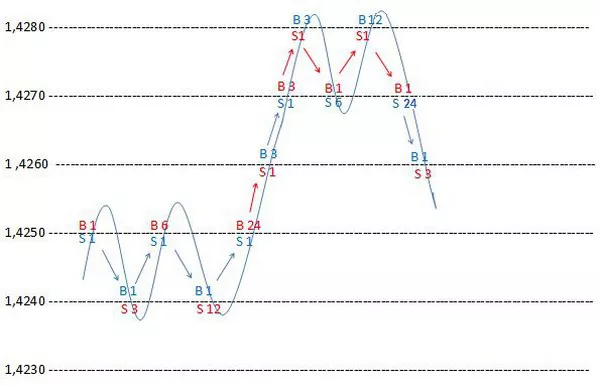Forex trading is a highly volatile market, and traders face various risks while trading forex, such as exchange rate risk, interest rate risk, credit risk, and country risk. To mitigate these risks, traders often use a strategy known as hedging. In this article, we will discuss what hedging is in forex trading and how it can benefit traders.
-
Section 1: What is Hedging?
Hedging in forex trading is a technique used by traders to reduce the risk of holding positions in the forex market. Traders employ this strategy to protect themselves against adverse price movements in currency pairs. Hedging is a way to minimize potential losses by opening an opposing position to an already existing position.
-
Section 2: How Does Hedging Work?
The idea behind hedging is to open another position that offsets the risk of the original position. Consider an example where a trader has a long position in EUR/USD and wants to hedge against potential losses. The trader can open a short position in EUR/USD or another currency pair with negative correlation to EUR/USD. If there is a price movement against the long position, then the loss in the original position would be offset by a gain in the hedging position. Similarly, if there is a price movement in favor of the long position, then the loss in the hedging position would be offset by a gain in the original position.
-
Section 3: Benefits of Hedging
- Risk Management – Hedging is primarily used for risk management. Traders use it to protect themselves against adverse price movements in the forex market.
- Diversification – Hedging involves opening additional positions on other currency pairs or markets, which diversifies a trader’s portfolio and reduces overall risk.
- Flexibility – Hedging allows traders to change their positions quickly in response to market conditions.
- Protection – Hedging provides protection against sudden market fluctuations.
- Reduced Margin Requirements – Hedging can allow traders to reduce their margin requirements.
-
Section 4: Types of Hedging Strategies
- Direct Hedging: In direct hedging, a trader opens a position that is the opposite of an existing position. For example, if a trader has a long position in EUR/USD, they would open a short position in EUR/USD to hedge against potential losses.
- Cross Currency Hedging: When a trader wants to hedge against currency risk in a transaction, they may use cross-currency hedging. This involves opening a position in a currency pair that is negatively correlated to the base currency of the original position.
- Options Hedging: An options contract gives the buyer the right, but not the obligation, to buy or sell an asset at a specified price on or before a specified date. Options hedging is used to protect against potential losses while still allowing for gains.
- Futures Hedging: Futures contracts are agreements to buy or sell an asset at a set price and date in the future. Futures hedging is similar to options hedging and is used to protect against potential losses while still allowing for gains.
-
Section 5: Risks of Hedging
While hedging can provide many benefits, it also carries some risks. Here are some risks associated with hedging in forex trading:
1.Direct Hedging:
In direct hedging, a trader opens a position that is the opposite of an existing position. For example, if a trader has a long position in EUR/USD, they would open a short position in EUR/USD to hedge against potential losses.
2.Cross Currency Hedging:
When a trader wants to hedge against currency risk in a transaction, they may use cross-currency hedging. This involves opening a position in a currency pair that is negatively correlated to the base currency of the original position.
3.Options Hedging:
An options contract gives the buyer the right, but not the obligation, to buy or sell an asset at a specified price on or before a specified date. Options hedging is used to protect against potential losses while still allowing for gains.
4.Futures Hedging:
Futures contracts are agreements to buy or sell an asset at a set price and date in the future. Futures hedging is similar to options hedging and is used to protect against potential losses while still allowing for gains.
Conclusion:
Hedging is a valuable tool in forex trading that can help traders mitigate risks and protect themselves against adverse price movements. It allows traders to manage their exposure and diversify their portfolios while still allowing for gains. However, it is important to remember that hedging involves additional costs and may not be effective under certain market conditions. As with any trading strategy, it is essential to carefully consider the risks and benefits before implementing a hedging strategy.


